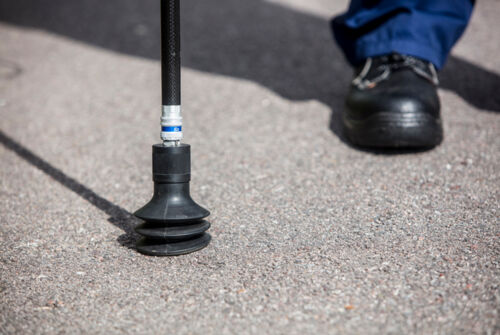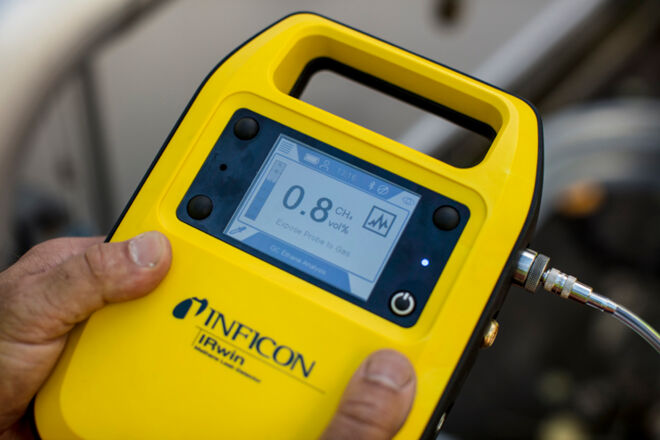Save Time and Money when Verifying a True Leak
With Help from IRwin® Methane Leak Detector

Cutting costs and unnecessary work is a major driver for all businesses, including gas leak detection. In some conditions, especially if lower concentrations of gas are found, identifying the type of gas is crucial in deciding whether to excavate a pipeline for repair or not. Knowing the gas type helps field personnel avoid acting on false alarms caused by naturally occurring methane in the ground.
True or false leaks?
Any methane generated by the decomposition of organic material buried under the ground of old industrial areas or former landfill sites can give leak alerts.

Even naturally occurring swamp gas from sewers or marchlands is a common reason for getting false gas leak signals.
A common procedure to distinguish if gas comes from a leaking natural gas pipe or from any other source of methane, is sampling the gas in a bag, send it to an external laboratory and have the chemical compounds analyzed. However, this procedure is both time consuming and costly. Safety measures have to be taken and the leak treated as a true natural gas leak until the results are available, generally after one or two days.
The chemical compound the laboratory normally searches for is ethane. They focus on this since ethane and other heavier hydrocarbons are not present in near-surface microbial gas like swamp gas, but are normally a major component of thermogenic gases like natural gas. The ethane concentration typically varies between 0.5vol% to 15vol% in natural gas. A sample with presence of ethane would therefore indicate that the detected leak originates from a leaking natural gas pipe.
The solution from INFICON
This analysis could be easily done on site by any operator using the IRwin® Methane Leak Detector from INFICON, with a built-in gas chromatograph (G-models). The complete test is finished within a few minutes after the leak is detected. Using the unique IRwin bell probe, samples can be drawn through almost any road surfacing material, consistently reducing the need for drilling bar holes and thus saving time.

The gas chromatography analysis can be made on samples with concentrations as low as 1000 ppm and up to 100 vol%. The IRwin methane leak detector automatically takes the sample for the analysis, whereas the operator only needs to follow the step-by-step instructions on the screen of the leak detector to have the test performed. Another benefit of the built-in gas chromatograph is the ability to detect ethane concentrations down to 0.5 vol%, even within a small sample. This extraordinary low ethane detection level will assure that all true leaks are found and classified.
The analysis result is presented as a live graph showing the sensor signal during the complete test sequence. The different gas compounds will be visualized as separate peaks in the graph and indicated with a symbol for each gas.
Documentation
Results are always presented on the instrument screen and give a clear indication of what has been detected
- “NG with Ethane detected” indicates a true natural gas leak is found
- “Methane detected” indicates a source of methane like swamp gas or biomethane
- “LPG detected” indicates a propane leak with absence or low levels of methane and ethane
This is typically presented on the screen within 1-2 minutes from the time of sampling, whereas the complete cycle time, including system purging, is less than 4 minutes.
At the end of the analysis, the operator will be asked to save the result as a report. The report is downloadable as pdf at any time and contains all necessary information like date and time, a map with coordinates of the location, the results and the graph itself.
Time and money savings
Rapid responses, on-site analyzing capability and reduced need for drilling bar holes are obviously factors minimizing time and costs of gas leak detection.
Do you want to learn more about the portable IRwin Methane Leak Detector?
Feel free to contact us or visit our product page. Additionally, you can have a look at our animation.
If you'd like to deepen your knowledge, also watch our Webinar on how to speed up your gas analysis.
